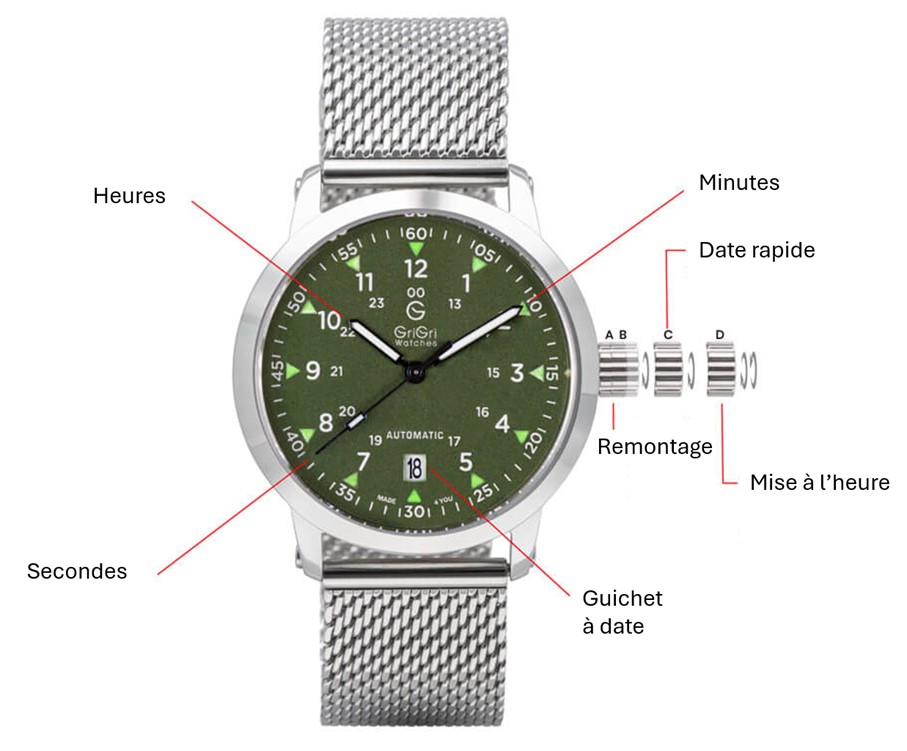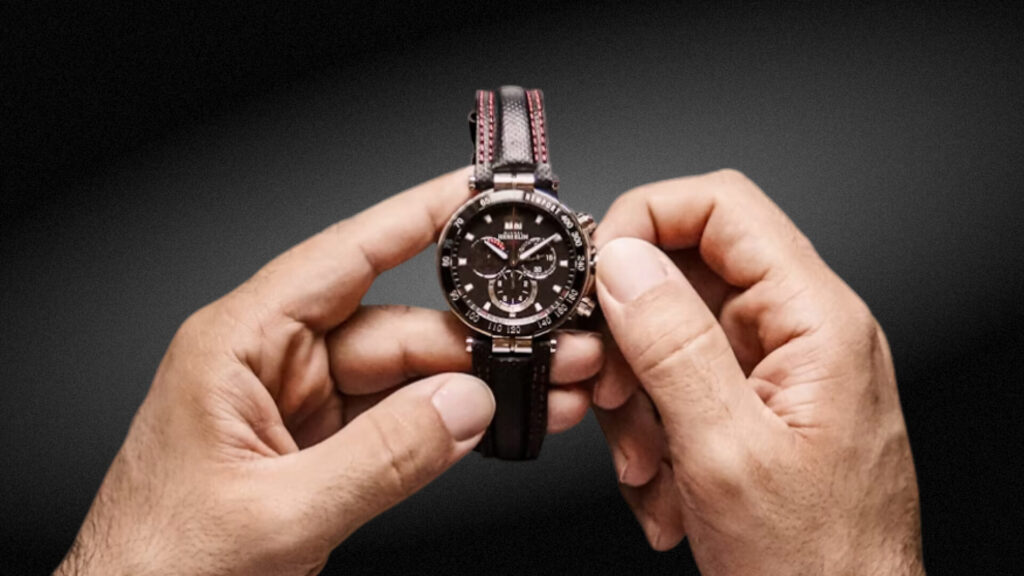Did you know that incorrect handling of the crown can cause irreparable damage to the movement of your watch?
Between the delicate setting of the date, the synchronization of the hands and the pitfalls of complication mechanisms, correctly setting your watch is often a real challenge.
This article deciphers the essential techniques for adjusting your watch with the precision of a watchmaker: from the fundamentals of crown positions to the subtleties of perpetual calendars, not forgetting tips for preserving water-resistance and precision.
From simple mechanical watches to complicated models, discover how to avoid critical errors and optimize the performance of your timepiece.

Master the basics of tuning
The crown is the nerve center of the setting, with specific positions dedicated to each function:
- Position 0: Neutral – allows manual winding on mechanical watches by turning the crown.
- Position 1: Quick calendar setting – ideal for avoiding premature wear of the time-setting mechanism.
- Position 2: Time setting of the hands, sometimes accompanied by a “stop-second” function for ultra-precise setting.
- Intermediate position: on certain complications, enables moon phase or time zone setting.
- Screw-down crown: on some models, the crown is screwed down to improve water-resistance; it must be unscrewed before adjustment.
Manual winding transforms each rotation of the crown into energy stored in the barrel spring, powering the escapement that regulates the movement of the hands with metronomic precision (known as isochronism).
Self-winding watches use wrist movements to drive the same spring via an oscillating weight.
Warning: 85% of mechanical malfunctions occur at night (10pm – 2am), a critical period for date change mechanisms. Prefer to set your watch during the day.
Procedure:
- Wind your watch manually (if mechanical).
- Pull the crown out to the last position to set the hour and minute.
- Check that the date jump occurs at midnight and not at noon!
- Finish by quickly setting the calendar or other complications.
Calendar complications
Perpetual Calendar
A true mechanical masterpiece, this complication automatically corrects the months from 30 days, February to 28/29 days, without the need for manual adjustment. Each manipulation must be carried out with particular care, in accordance with the manufacturer’s recommendations.
Moon phase
Primarily aesthetic, the moon phase is popular with enthusiasts. Its setting is often based on the full moon of the astronomical calendar or on dedicated applications.
Big date
With this complication, rapid adjustment is often achieved via intermediate positions of the crown, or thanks to correctors discreetly integrated into the case middle.


How your timepiece works
Rate” refers to the advance or delay of a watch, measured in two ways:
- Daylight saving: Note the difference between the time on your watch and the time on your phone over 24 hours. The offset (+/-) defines the rate.
- Instantaneous rate: Professional method using a chrono-comparator that measures precision in seconds/day (s/d) by means of escapement sound impulses.
Proper operation depends on many factors (temperature, position, wear, etc.). A simple adjustment is not always enough: sometimes, a complete overhaul is essential.
If you have the skill, you can adjust the rate slightly via a mechanism called a raquette on the balance wheel – but only if the deviation remains below ±50 s/d.
Beyond that, you’ll need to take the watch to a watchmaker.

A few tips for sustainability
- A complete winding generally requires 30 to 50 turns of the crown.
On a mechanical watch, resistance indicates that the spring is loaded: don’t force it! - Automatic watches are equipped with a sliding clamp that protects the spring from over-tightening.
- Never leave the crown pulled out, as this will compromise water-resistance.
- Avoid placing your watch less than 30 cm from an electronic device (risk of magnetization).
- Overtightening the screw-in crown can cause irreparable damage to the thread.
- Too many repeated adjustments = premature wear of the movement (symptoms: loss of function, scratching, date disc jamming).
- During prolonged storage, wind your watch every 3 months to prevent the lubricants from congealing.
